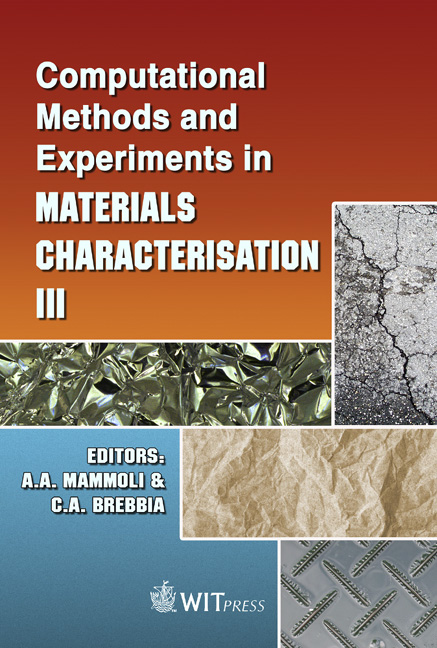Fractal And Spectral Analysis Of Fracture Surfaces Of Elastomeric Materials
Price
Free (open access)
Transaction
Volume
57
Pages
9
Published
2007
Size
1,432 kb
Paper DOI
10.2495/MC070191
Copyright
WIT Press
Author(s)
D. Ait Aouit & A. Ouahabi
Abstract
Crack path identification was based on a multifractal spectrum calculated upon the fracture surfaces of an elastomeric material. This identification was carried out under various mechanical loading (stress level, frequency and loading ratio) and thermal damage. The self-affinity nature of the surface roughness anisotropy is roughly identified through the power spectrum analysis. Then, the clustering singularity structure and its multiscaling characteristics are further examined with the box-counting technique and multifractal analysis. According to the features extracted from the multifractal spectrum obtained, it is apparent that the fracture surface morphology exhibits fewer irregularities with the crack initiation, and more irregularities appear with the crack propagation, until the phase of the final rupture of the material which presents fewer irregularities. This identification is very useful to determine the fracture causes of manufactured parts from the studied material. Keywords: surface roughness, multifractal, fracture, irregularities. 1 Introduction The fracture surfaces contain the history of micro crack signatures, which are the indices of the fatigue of the studied materials. In the past few years, most commonly applied methods in a numerical description of fracture surfaces are quantitative fractography and image analysis [1, 2]. The concept of fractal geometry has been proved to be very useful in describing fracture morphology of materials. The Stach’s works [3–6] have shown the effectiveness of multifractal analysis in the fractographic study.
Keywords
surface roughness, multifractal, fracture, irregularities.





